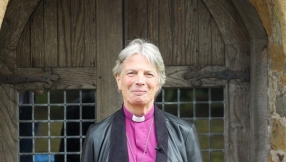
The decline in post-Covid attendance in the Church of England may be down to churches ending online services after the pandemic, rather than a decline in demand, a report has suggested.
The study, available online from the Diocese of Oxford, compared attendance data from October 2019 across the dioceses of Canterbury, Chester, Guildford, Oxford, and Leeds, with October 2022 figures.
The data spanned 1,139 churches - half of the dioceses' total churches - and is "sufficiently large and representative to give a good early idea of the national picture", the team of researchers behind the study said.
The report finds that attendance in 2022 fell by 22% on 2019 levels, although attendance last year was 7% higher than in 2021 and 40% higher than 2020 when many churches were closed during lockdowns.
The number of adults attending church on Sunday after the pandemic was 21% lower than in 2019, while for children, the decline was steeper at 29%.
"Many churches have only recovered to under half their previous onsite attendance while a much smaller number have doubled or more," the report said.
The data also showed that by October 2022, the number of services being run by churches had fallen by between 14% and 24% across the five dioceses since 2019.
There was also an increase in the proportion of churches not offering a service every Sunday, rising from 19% in 2019 to over a quarter (26%) in 2022.
This tended to affect dioceses that were more rural and with a larger number of small churches.
Churches that stayed online and did not reduce the number of services on offer "fully regained" their 2019 attendance levels, the study found.
"With total onsite attendance at 78% of 2019 it seems that the average congregation in 2022 was only slightly smaller than in 2019 – most of the 22% attendance fall is associated with a 17% drop in the number of services," the researchers said.
"This is shown by the attendance recovery being much stronger in churches with the same or more services than in 2019.
"The 58% of churches with fewer services had regained only 71% of their 2019 attendance; the 25% of churches with the same number of services regained 81%, and the 17% with more services regained exactly 100%."
Reflecting on why the Church has not yet achieved a "full" recovery from the pandemic, the researchers suggested it was down to "patchy provision, not declining demand".
They argued that it was "wrong" to suggest that decline was inevitable in a secularised post-Covid society, and that there was instead a "strong correlation between reduced provision of online and onsite services and reduced attendance".
"Churches now meeting on fewer Sundays do not have fewer people attending when there is a service than in 2019, rather the average has gone down with the number of services," the report said.
"Churches still online are attracting almost as many online attendees as they were in 2021 – so it seems likely that churches stopping online would have kept at least some online participants if they had kept going."
It continued, "So, we have concluded that numbers are lower than in 2019 not because the demand for church is in inevitable decline but because of difficulties with the supply of both onsite and online church services.
"Churches that stayed online and have not reduced their service numbers have fully regained 2019 attendance levels. It is only where churches have retrenched that their attendance is reduced."
Some of this "retrenchment" was attributed to "a problem of overstretched clergy emerging exhausted from the Covid-19 years being unable to re-instate all the old and innovate the needed new things all at once".
The report recommends that churches "fine-tine" their provision of services to meet "changing demand", and take targeted action to return to 2019 attendance levels.
It concludes with a call to churches to develop their online services rather than abandoning them, and to "make church and services available every week".
"If attendance is sensitive to the state and supply of church life and worship, then the future of attendance trends lies in the churches' own hands," the report reads.
"Developing the number and relevance of services leads to church growth.
"This is a far more optimistic and potential filled finding than the assumption of helplessness in the face of inevitable decline."













